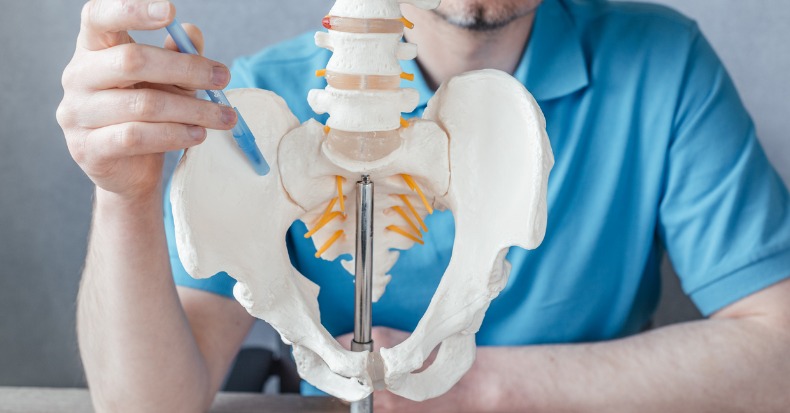The sacroiliac joints (SIJ) sit between the sacrum (tailbone) and ilium (pelvis), which serve to connect the spine and pelvis and facilitate load transfer from the low back to the lower extremities. Generally, when we consider the cause of a patient’s low back pain, the first place investigated is the lumbar spine. But as it turns out, the culprit can often be the SIJ.
Studies in recent years estimate that the SIJ may be the primary or contributing cause of 15-30% of low back pain cases. Not only can sacroiliac joint dysfunction be experienced by the patient as low back pain but it can also cause pain in the groin, and according to a 2017 study, up to 60% of SIJ patients report pain that radiates into the leg!
The mechanism of SIJ injury is often a combination of axial loading (downward/jamming pressure) and abrupt rotation (twisting). While this can be caused by a sudden fall or collision, repeated strain can also injure these joints. A 2018 study that included 271 recreational golfers found that 23% had sacroiliac joint dysfunction, presumably from repeatedly swinging a golf club, and nearly all of them (96%!) also had lower back pain. Another study, also published in 2018, found that among a group of 1,500 pregnant women, 80% had sacroiliac dysfunction. The researchers suspect the combination of weight gain and a loosening of ligaments that occurs during pregnancy is the likely cause.
Researchers have also found that leg length discrepancy (LLD) can place uneven loads on the sacroiliac joints, which can increase the risk for injury. Other causes of SIJ injury can include prior lumbar fusion, joint infection, malignancy, spondyloarthropathies, inflammatory bowel disease, gait abnormalities, scoliosis, and excessive exercise.
The good news is that doctors of chiropractic are well equipped to not only determine if the SIJ can be a factor in a patient’s low back pain (or leg or groin pain) but also to manage SIJ dysfunction. Studies have shown that a combination of manual therapies (including spinal manipulative therapy) and stabilization exercises is effective for reducing pain and improving function in the SIJ, more so than corticosteroid injections or physiotherapy. While patients may experience immediate improvement after a single treatment, it may take several treatments to achieve a satisfactory and lasting result.
